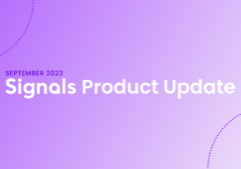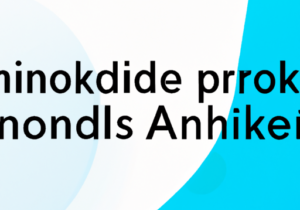Account-based marketing (ABM) is the new buzzword in the B2B marketing space. In a recent episode of Digital Conversations with Billy Bateman, Kristina Jaramillo from Personal ABM outlined how to overcome a major pitfall in implementing ABM-not being personalized enough to your individual prospects.
Overview Of Account-Based Marketing
Everyone has their own definitions and approaches to ABM.
At its core, ABM is a business strategy. Kristina describes it as the “revenue engine for the business.”
Account-based marketing is essentially deciding on what specific accounts you want to target and then creating individualized campaigns for those accounts.
With ABM, instead of targeting to an entire market, you market to particular accounts.
And it’s about the entire customer journey, not just about initially bringing in new customers.
With this approach, every interaction with the customer has to be super-targeted. You need to know who the decision-makers are, their major pain points, and how you can help them solve their problems.
How To Leverage LinkedIn For Your Account-Based Marketing Strategy
A big part of ABM is making direct and relevant connections with people.
LinkedIn is the perfect platform for that.
There is a much higher chance that someone would respond to you on LinkedIn versus email campaigns.
You do have to be careful with making sure that what you are sending someone on LinkedIn is relevant to them. We have all been there. We get a LinkedIn message from someone. It’s a well-thought-out message that seems very personalized, but then it is not relevant to you.
It should be about personalization and relevance.
The Big Pitfall of Account-Based Marketing Implementation
The major pitfall of ABM implementation is when your account-based marketing lacks personal relevance.
Everyone is attempting to incorporate ABM strategies one way or another. If you don’t understand how to make it personally relevant, then your ABM strategies will fail.
Personalization vs. Personal Relevance
“Personalization is different from personal relevance.” To break it down, that is essentially saying that a message can be personalized in the sense that it addresses the individual by name, includes information about their role, uses data specific to their industry or company, and possibly even addresses a specific pain point they have. Relevance on the other hand is whether or not whatever you have to say is important and pertinent to them and their business at that moment. Maybe you think they absolutely need your product/service, but if their strategies are focused on other things, what you have to say won’t have any relevance to them.
You need to think about the actual person you are talking to, not just their industry or even their company. Consider what that individual wants and needs to know and how to make your marketing relevant to them.
We tend to assume what problems people in certain roles are struggling with, and a lot of the time we could be far off.
The major way to make it relevant to them is to highlight how you uniquely fill their gaps, not just for them or their team, but for their whole organization. Show how your product/service impacts finance and operations and customer service, etc. A buying consensus is easier to achieve when everyone understands the impact and benefit of making the purchase.
Building Relationships Digitally
Let’s go back to talking about LinkedIn. There has said to be a recent drop of 44% in responsiveness to sales and marketing messaging on LinkedIn. What can you as a sales member or marketer do to combat this?
If you view LinkedIn messaging as a way to build relationships digitally, then you will see an increase in response rate.
Pre-COVID buyer seller relationships were slightly different, but don’t go back to the old ways of doing things. You must learn to thrive with this new, increasingly digital way of marketing and selling.
People want relationships they can trust, which sometimes is challenging to do when it’s not face-to-face. But, again, it all goes back to making it personally relevant.
After connecting with someone on LinkedIn, you can’t automatically expect them to want to schedule a meeting with you right off the bat. You need to earn their trust and show them why what you have to offer will matter to them.
One spammy message and you can be sure to face unresponsiveness.
Traditionally, sales and marketing try to pull prospects into their funnel. A better way is to allow prospects to guide themselves down your funnel.
The Challenger Approach
Take the Challenger approach to LinkedIn. If you’re not familiar with the challenger sales methodology, we would highly recommend reading The Challenger Sale by Brent Adamson and Matthew Dixon. This methodology is all about “teaching prospects about their situations, tailoring their communication to suit specific prospects, and taking control of a sale.”
Kristina Jaramillo highly suggests using strategies from that in your LinkedIn messages. The outcome should be that the prospect comes to their own conclusion, as opposed to you laying out a story for them.
Quick Overview
Account-based marketing is extremely important. You want your marketing and sales efforts to be focused on the individuals of the buying committees. No more spray and pray!
The major pitfall of ABM implementation is not being personalized enough to your individual prospects to where it is actually relevant to them.
There’s a difference between personalization and personal relevance.
Personalization involves incorporating information in your messaging that applies to their role, company, or industry. Personal relevance is taking that a step further and tailoring the message to the individual more specifically.
This unique approach will set your brand apart from all others because people appreciate feeling understood.
READ MORE
Start seeing your Buyers' signals
Signals is helping companies automate, grow, and close sales pipeline with industry-leading predictive intent scoring, lead generation, and real-time engagement.






















